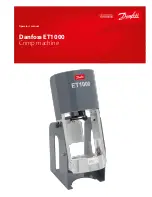
51
General Sharpening Procedures
Gouge Tips – Fingernail, Square End
or Swept Forward?
Most carvers like to have a slight fi ngernail on all their
gouges because this is the easiest shape to hone. Others
will have square-end gouges, and a few will have gouges
with a slight forward sweep to the upper edges (see the
middle drawing on the facing page).
Unless you have good reason to do otherwise, I recommend
that you keep the ends of your gouges square. The shape
is not so signifi cant when you are cutting with the grain.
But when you are cutting cross grain it makes sense to
sever the ends of the fi bers at the same time or slightly
before dislodging the central part of the chip (see the
photo below). You will see many sets of carving tools with
fi ngernail ends on all of the gouges. Often this indicates
only that the manufacturer found it easier to sharpen a
gouge that way than to do it properly.
There are times when
you need a
fi ngernail
end, however. For
example, if you were
carving a dot and cross
pattern, ideally you
would want two gouges
of exactly the same size
and curvature, one with
slightly forward swept
wings and the other
with a
fi ngernail end
that exactly matches the
sweep (curvature) of
the gouge. This would
allow you to make stab
cuts that would almost
exactly match the
horizontal cuts. More
important, it would
prevent popping off
any of the dots, which
is what would happen
if you were using a
square-end gouge for
the stab cuts. If you have
ever tried this type of
carving, you will know
exactly the advantages
described.
Truing the Sweep
In cross section, most gouges are not true segments of
circles. They are more often parabolic in shape. This
may or may not cause you a problem when you are
carving, but it will almost always cause you a problem
when you are sharpening.
To deal with the carving aspect fi rst, many carvers like to
use a roll cut when they are working cross grain or end
grain. As they push the gouge through the wood, they
rotate it. This has exactly the same effect as skewing a
plane blade or chisel when cross-grain or end-grain
cutting. It changes the relationship of the forces acting on
the wood and on the tool, generally providing a cleaner
cut. However, to make an effective roll cut without
bruising the wood, stressing the tool or tearing fi bers, the
part of the gouge in contact with the wood should be a
perfect semicircle. Tools with noncircular cross sections
do not rotate well as they are cutting.
Fortunately, it is also easier to sharpen a tool with a semi-
circular cross section than it is with any other curved
cross section. It is much easier to roll the tool to grind an
even bevel when you are dealing with a regular shape.
This happens to be one case where it is both easier and
more effective to work on the inside of the tool than the
outside. There are a variety of ways to true the sweep. If
The clean cut on the left was made
by a square-end gouge; there is no
tearout anywhere. The rougher
cut on the right was made by a
fingernail-end gouge.
When honing the outside bevel of the gouge on a leather
belt, tilt the tool slightly downward so it will not dig into the
belt as the belt is turning. (Photo by Susan Kahn)
True the outside of a gouge on a belt sander, with the tool
held at exactly 90° to the belt in the slack part between the
platen and the upper wheel. (Photo by Susan Kahn)
Содержание Mk.II
Страница 6: ...vi Veritas Mk II Power Sharpening System ...
Страница 14: ...8 Veritas Mk II Power Sharpening System ...
Страница 20: ...14 Veritas Mk II Power Sharpening System ...
Страница 33: ...27 Exploded Assemblies Master Parts List 5 3 13 9 7 2 14 24 21 1 6 22 20 19 18 17 16 15 23 4 ...
Страница 36: ...30 Veritas Mk II Power Sharpening System ...
Страница 70: ...64 Veritas Mk II Power Sharpening System ...














































